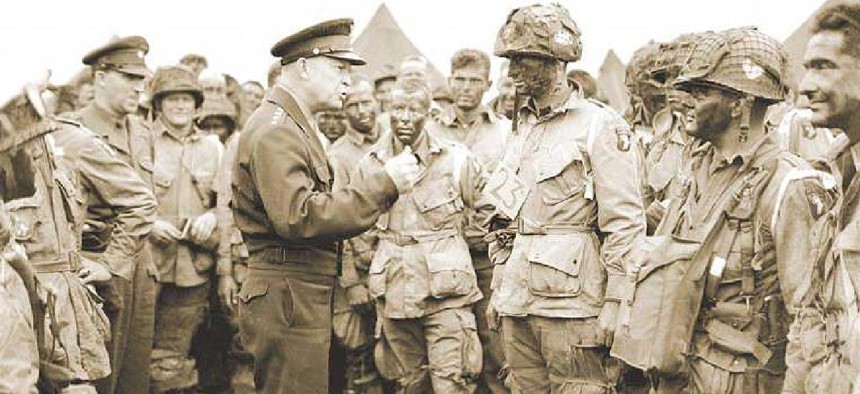From Eisenhower to AI: What human capital management is learning from the past


Connecting state and local government leaders
An extensive database powered by AI can help agencies accurately evaluate job candidates, assess their “behavioral DNA” and issue an instant report to human resource managers.
With a new generation quickly entering the modern workforce, it is never been more important for public-sector agencies to take a thoughtful, strategic approach to human capital management. It is hard to imagine a better time to start down that road, with state-of-the-art IT systems taking the guesswork out of human resources decisions and delivering a level of management insight that would have been unimaginable even a decade ago.
That technology is certainly the cornerstone of government's efforts to stay ahead of a rapidly shifting workforce. Yet it is worth remembering that this is not the first massive wave of transformation the U.S. public service has faced. We have been here before, and it is useful to draw insight and inspiration from another memorable moment when America had to surmount an overwhelming HR challenge to achieve a fundamentally important objective.
Doing whatever it takes
The story takes us back to March 1920, just 16 months after the end of World War I. The future general George Marshall, at the time still an Army major, was convinced a second global conflict was on the horizon and was deeply concerned that a demobilized military left the U.S. vulnerable. He laid out the problem in a letter to retired Gen. John Mallory and listed the seven essential characteristics the Army should look for in the next-generation fighting force it would soon need to recruit.
Contrary to the prevailing belief of the day, six of the seven characteristics were behavioral in nature: cheerful, knowledgeable, optimistic, showing “marked energy,” extreme loyalty and determination. Those behaviors became the criteria for one of the most memorable senior management recruitments in U.S. or world history: Marshall “skip-promoted Dwight D. Eisenhower at the start of U.S. involvement in World War II. In fact, he passed over 350 senior generals to appoint Eisenhower to lead the U.S. troops and eventually the Supreme Allied Forces in Europe. It was a pivotal moment for the war effort and possibly set the course of history -- Eisenhower led the U.S. and its allies to victory and later became the country’s 36th president.
Perhaps equally remarkable was Marshall’s masterful ramp-up following the bombing of Pearl Harbor, going from just 189,000 troops in 1939 to over eight million by the end of the war, with the equipment, training and motivation to fight the war on two fronts.
For Marshall, his incredible foresight, combined with his innate ability to identify talent, worked. Powerfully. This is exactly the way we need our human resource decisions to work today.
Same problem, new solutions
Three generations ago, Eisenhower was one of the most potent secret weapons the U.S. could contribute to the Allied war effort. In today’s modern public-sector workforce, things are a bit more complicated (and much more systematic).
Just as the U.S. military had mostly demobilized after the World War I, the long-awaited wave of public-sector retirements is upon us. Government agencies at all levels are losing a generation of knowledge and experience but gaining a capacity to quickly innovate that may have been less marked over the last few decades.
The retirements are no surprise, and the fight for talent is nothing new. But the push to recruit and retain excellent employees is accelerating, made more urgent by budget constraints. When agencies have a limited number of positions to work with, they have to make every single one of them count.
Those practical imperatives outlined by Marshall are now more important than ever. Like Marshall, public-sector agencies need a new generation of leaders who are cheerful, knowledgeable, optimistic, showing “marked energy,” extreme loyalty and determination. To find them, agencies can count on an unprecedented suite of artificial intelligence and machine learning tools to revolutionize employee selection and improve the modern workforce.
AI to the rescue
An AI platform using machine learning techniques can develop a more finely honed understanding of human behavior, based on an amalgamation individual profiles and their corresponding data points. An extensive database powered by AI provides a foundation to help agencies accurately evaluate job candidates, assess their “behavioral DNA” against the performance profile of the position they are applying for and issue an instant report to human resource managers.
It is a powerful solution that synthesizes the attitudes and expectations that first led George Marshall to select Dwight D. Eisenhower. And it works.
NEXT STORY: Clearing hurdles in the race to automate




